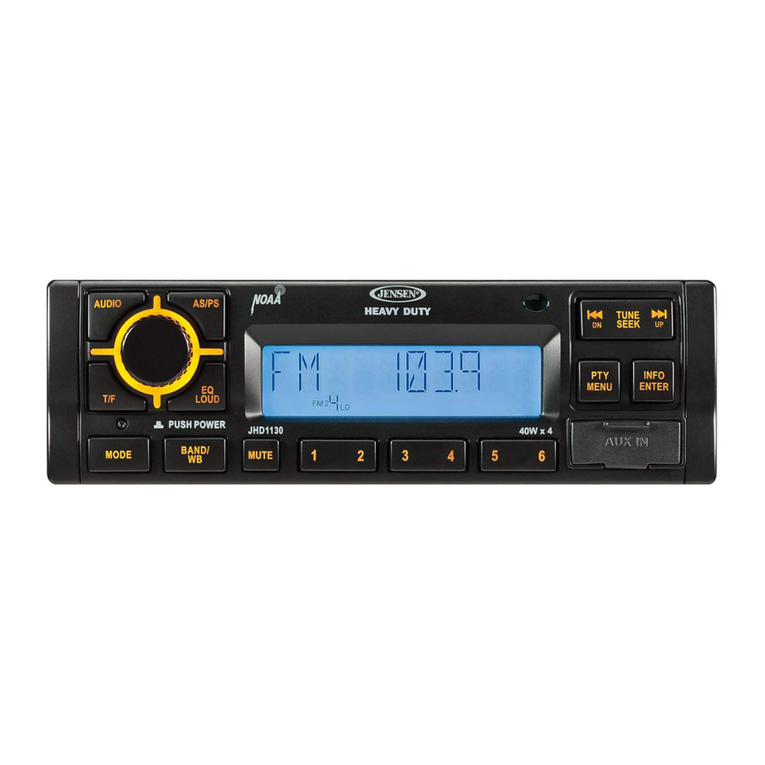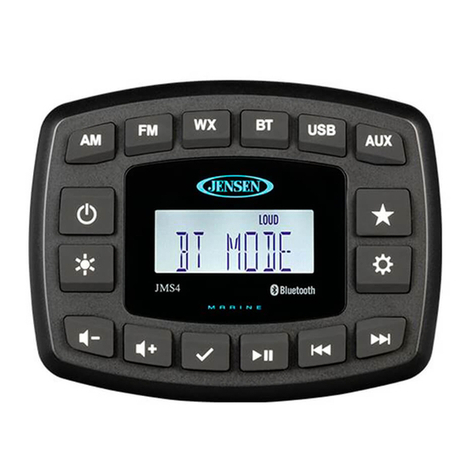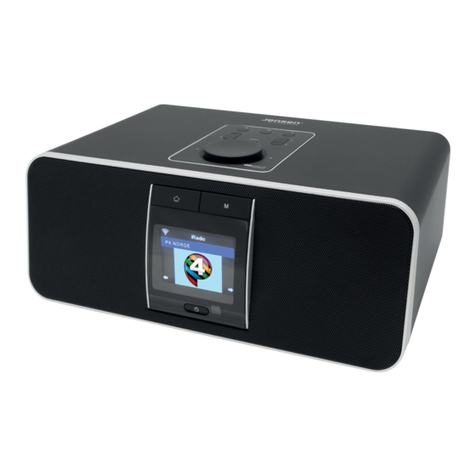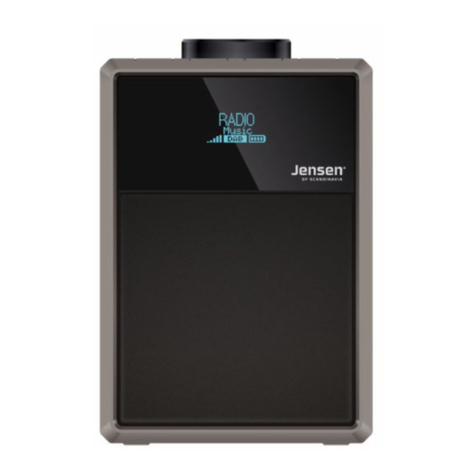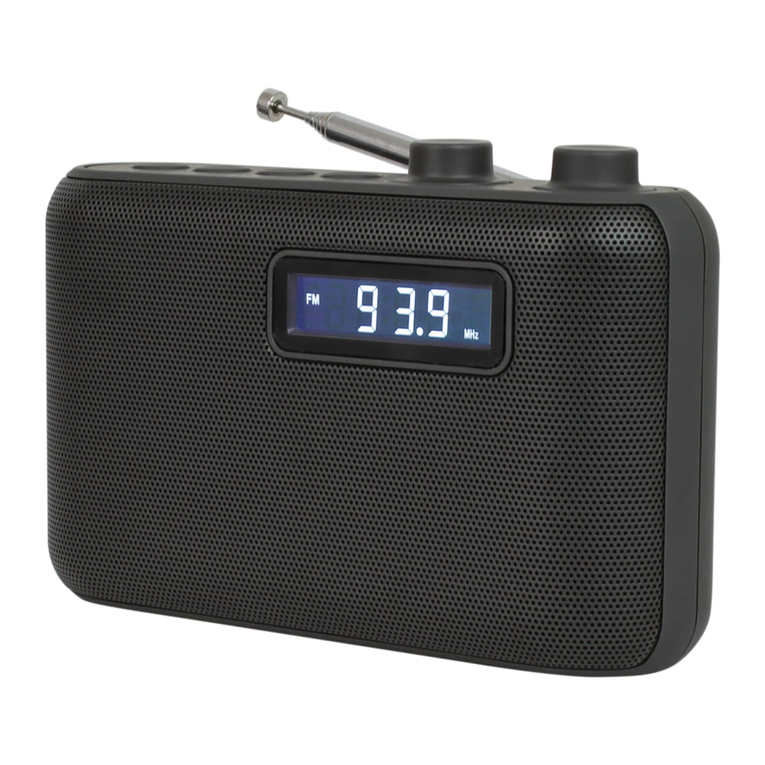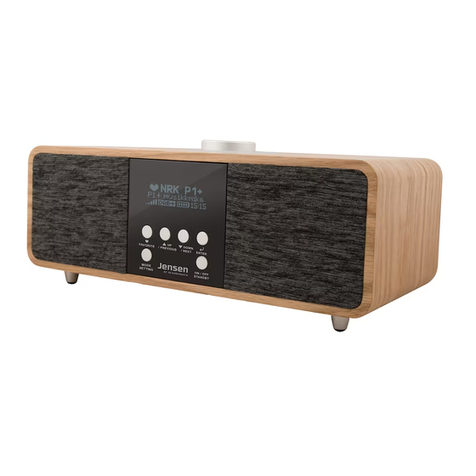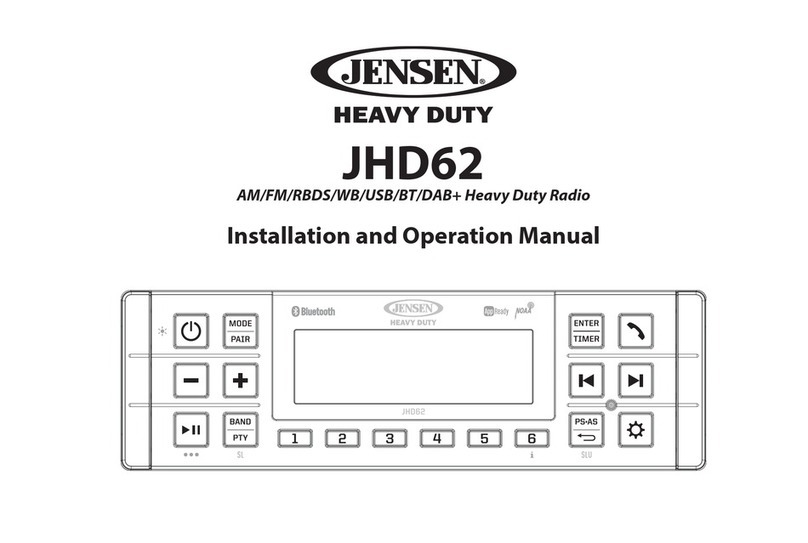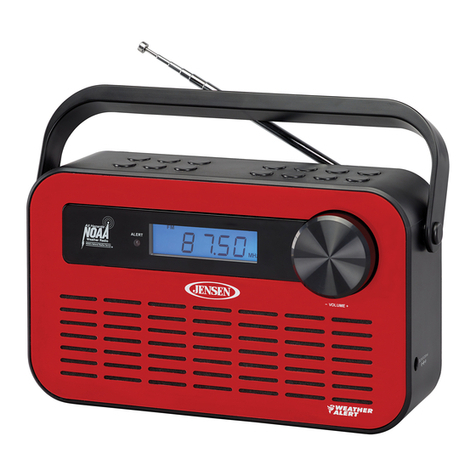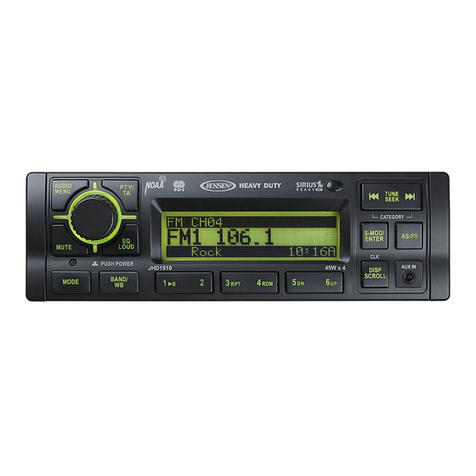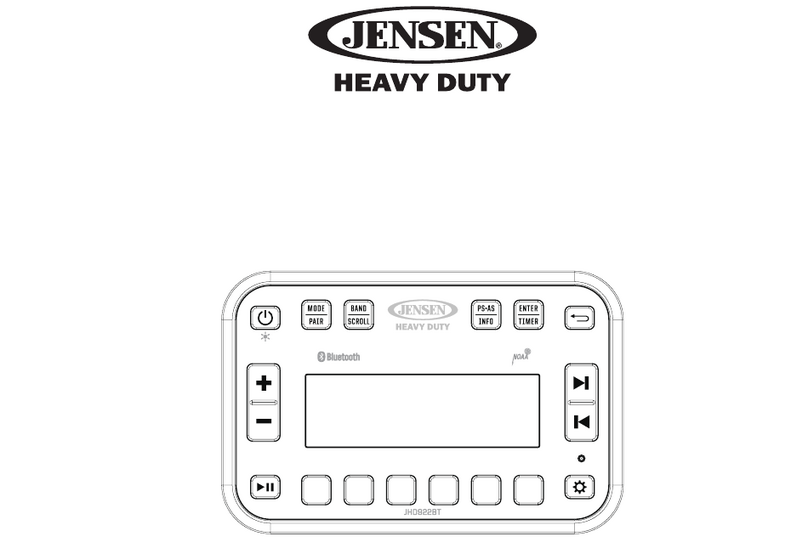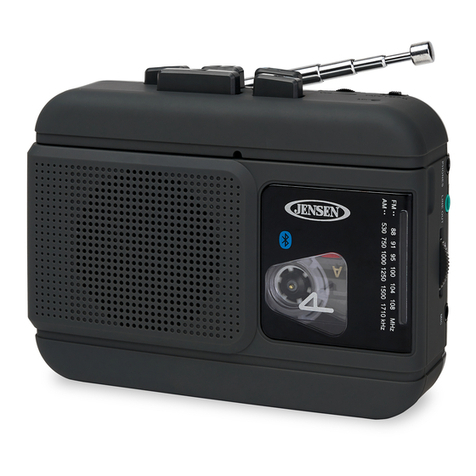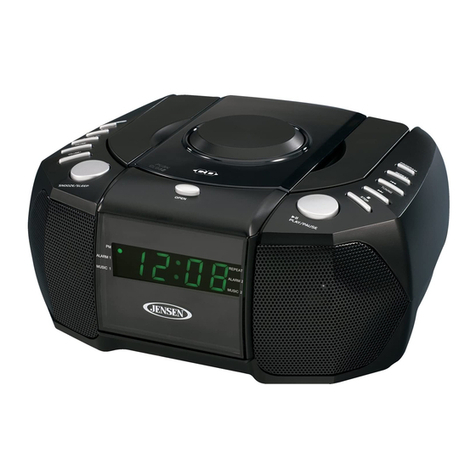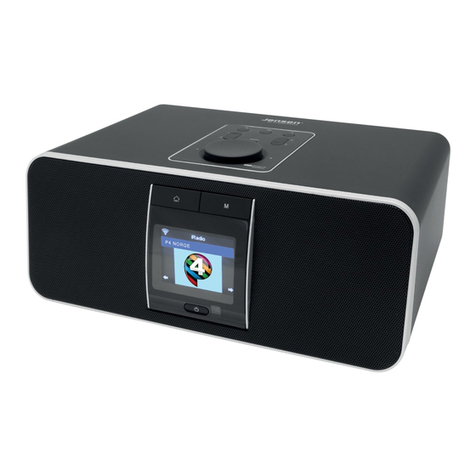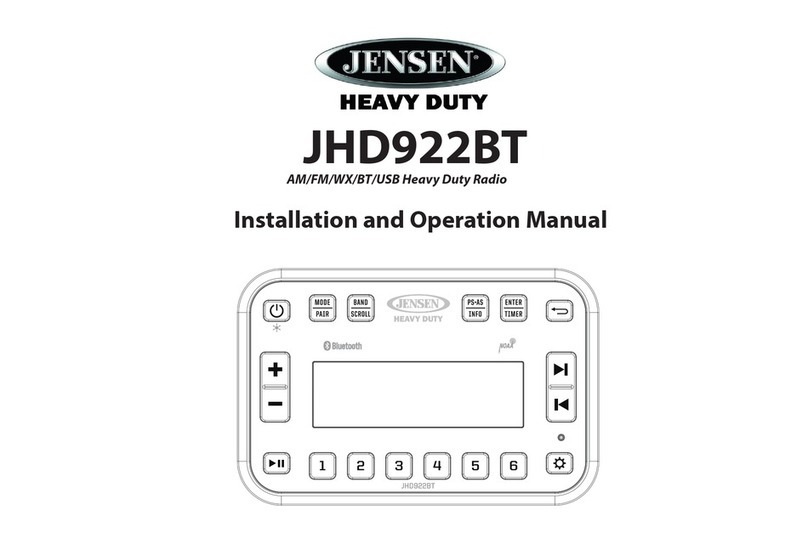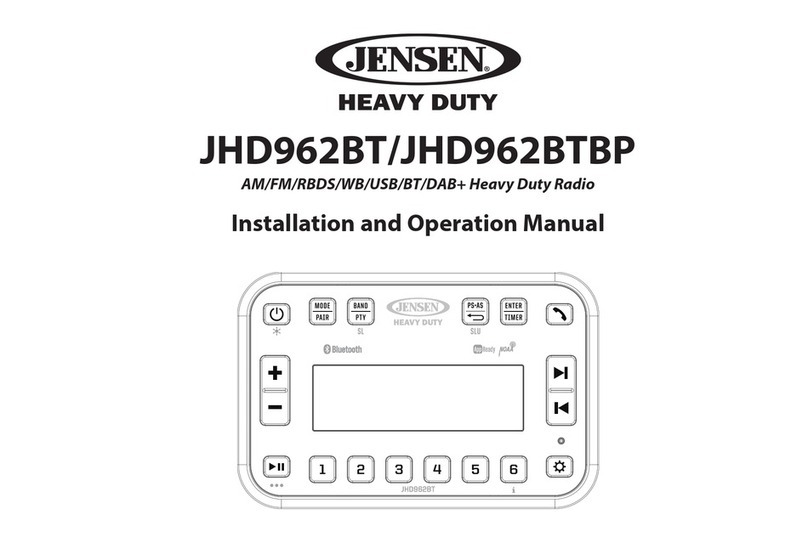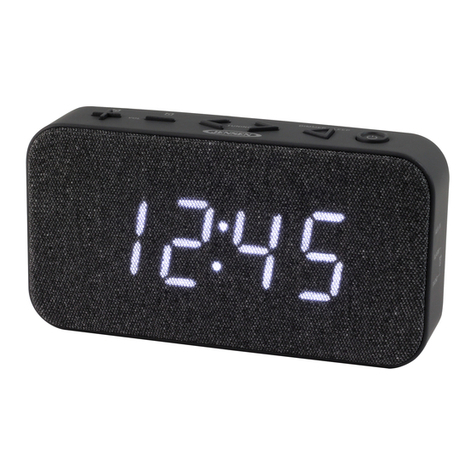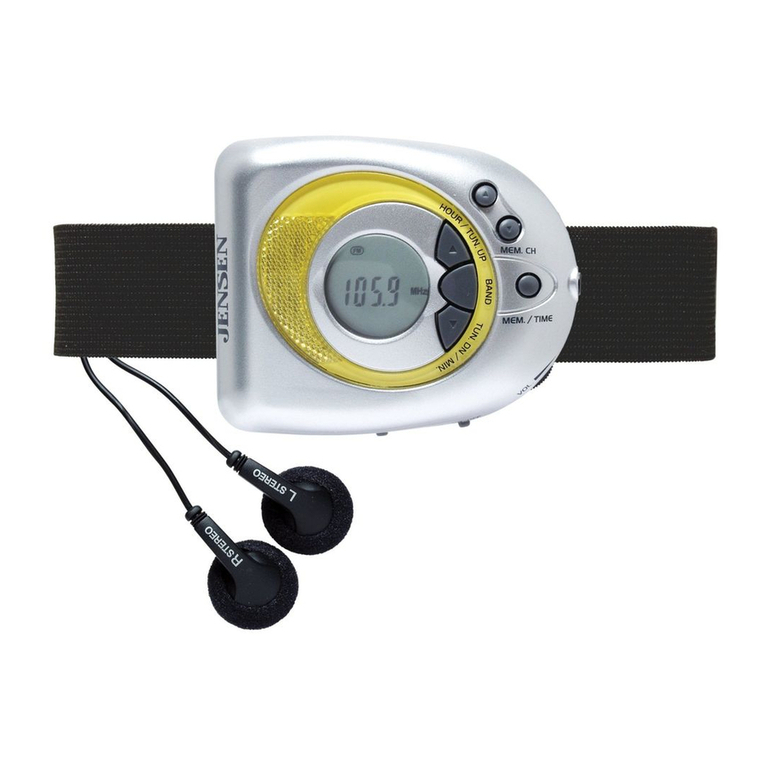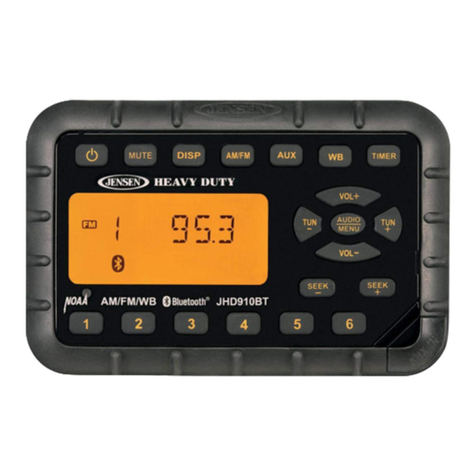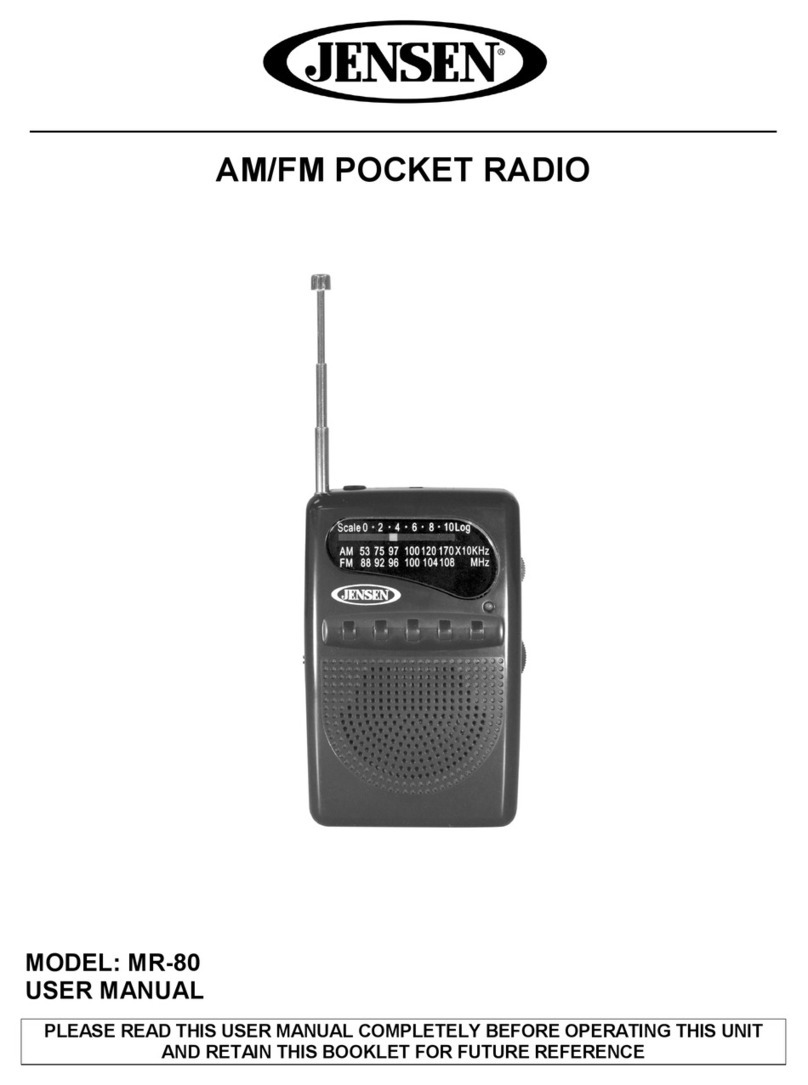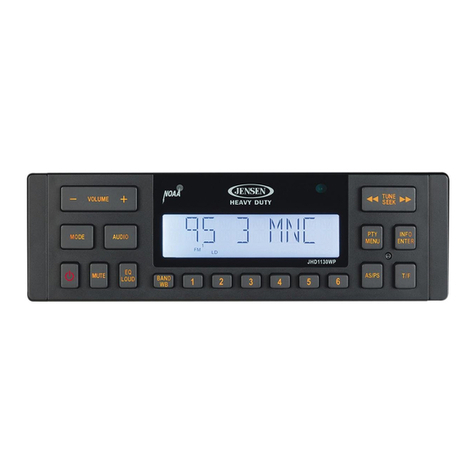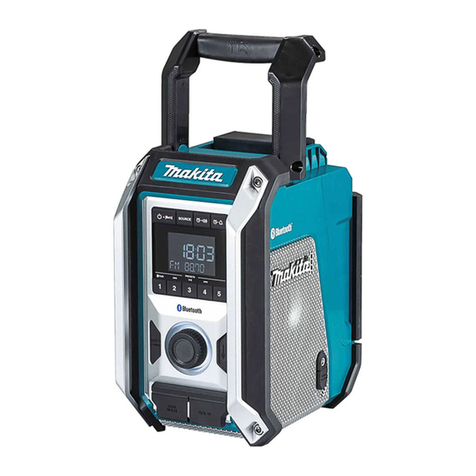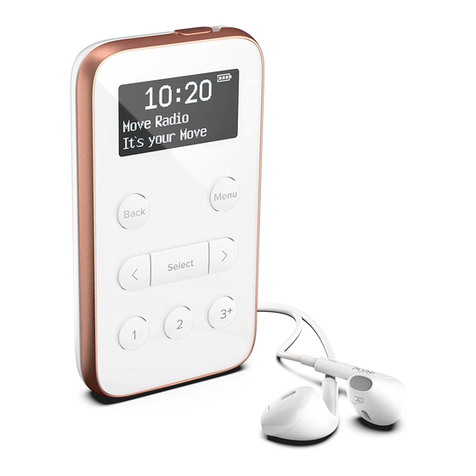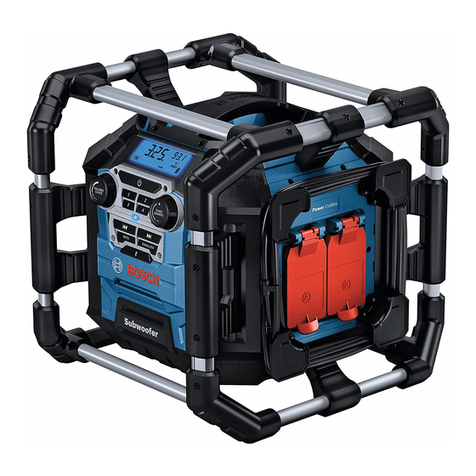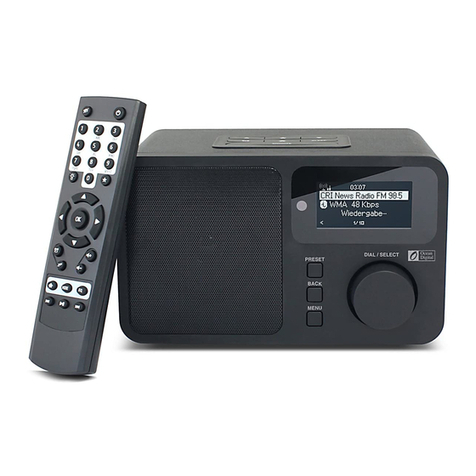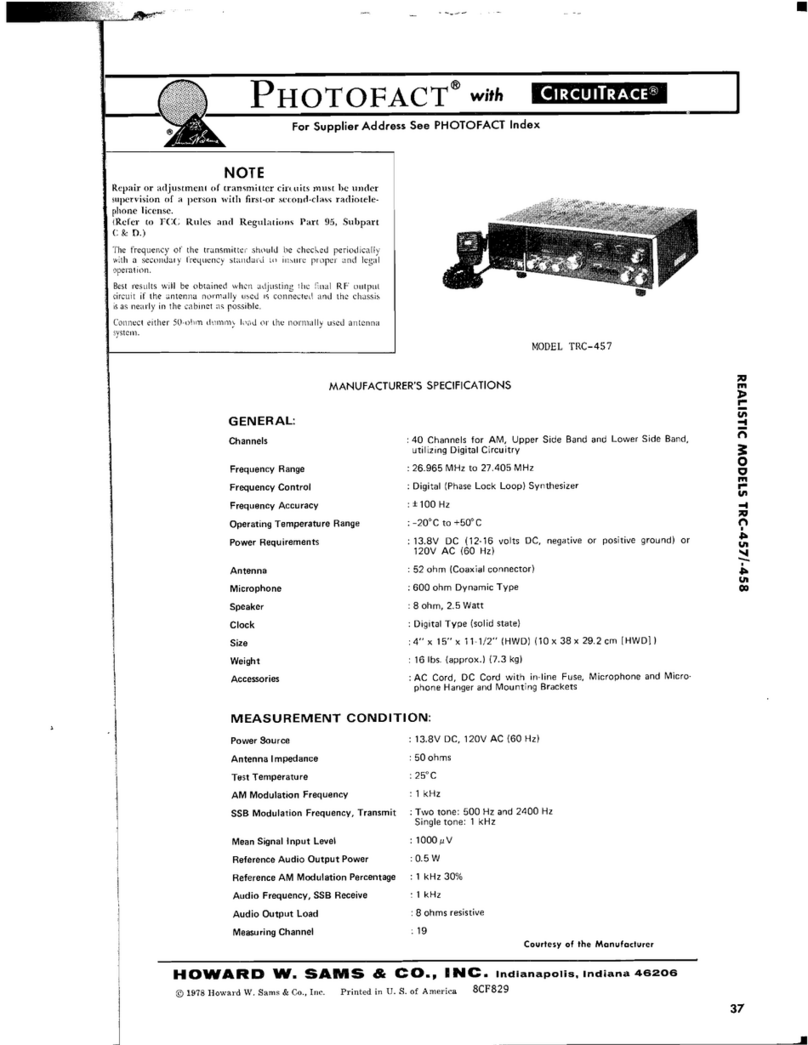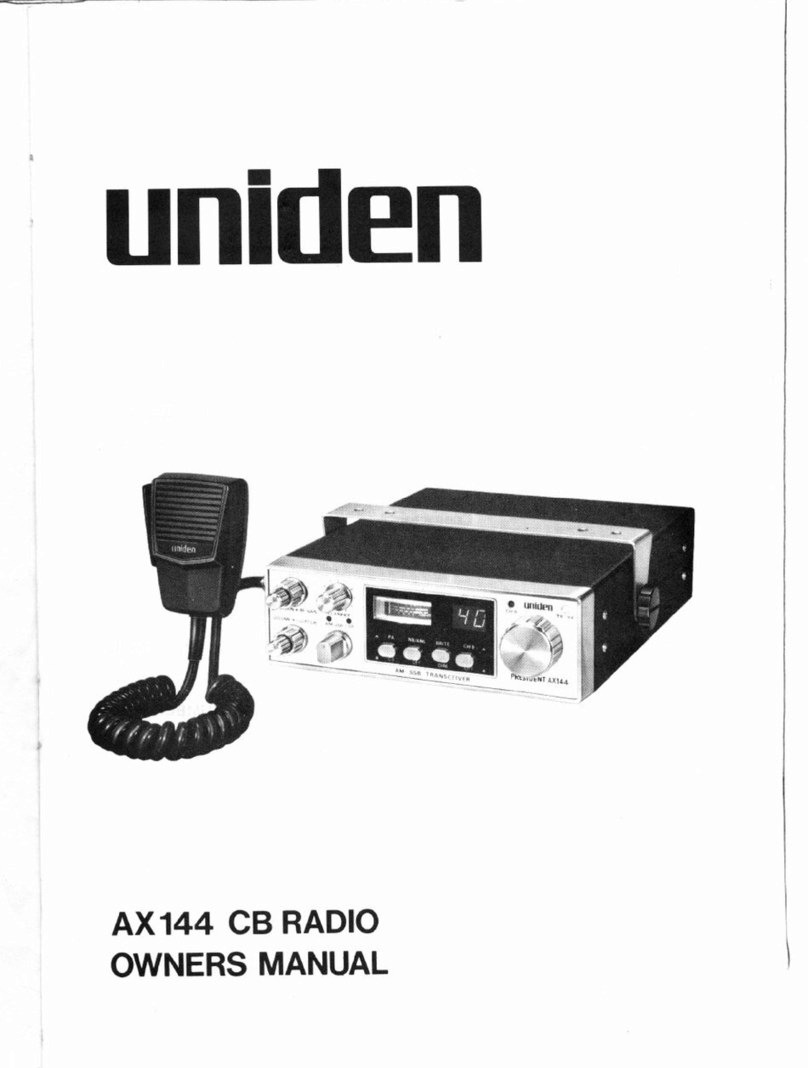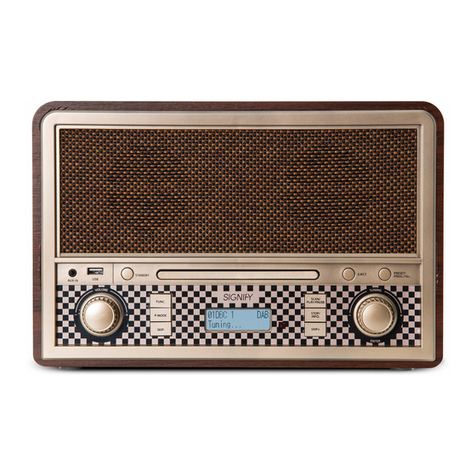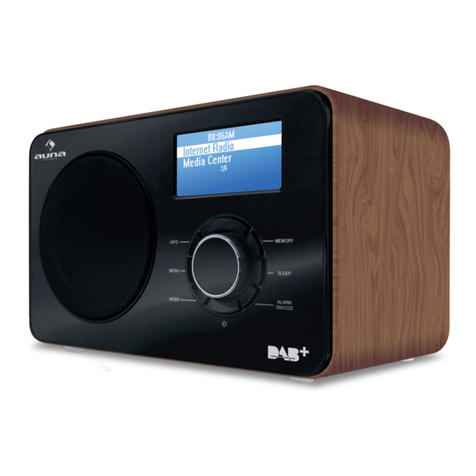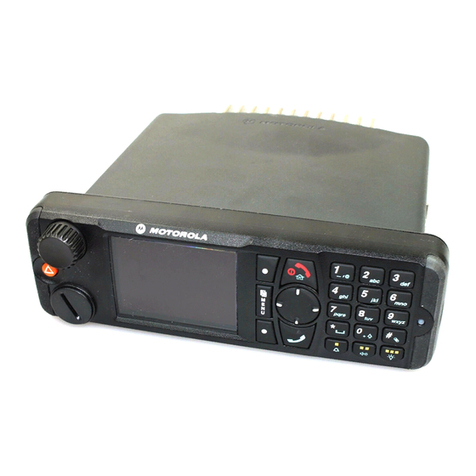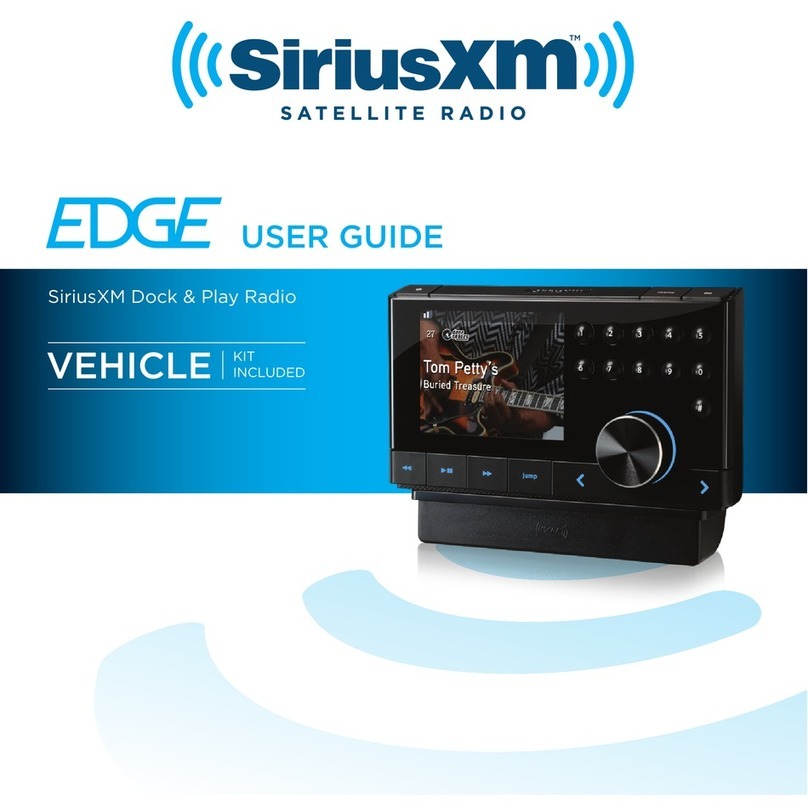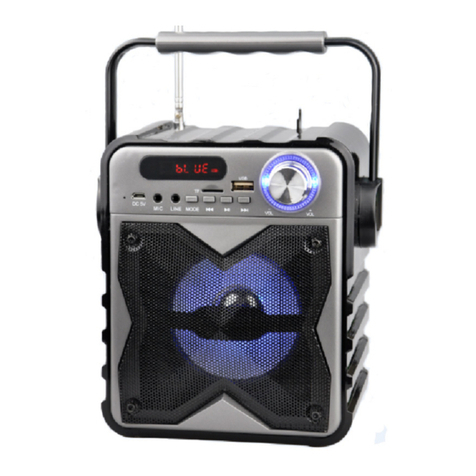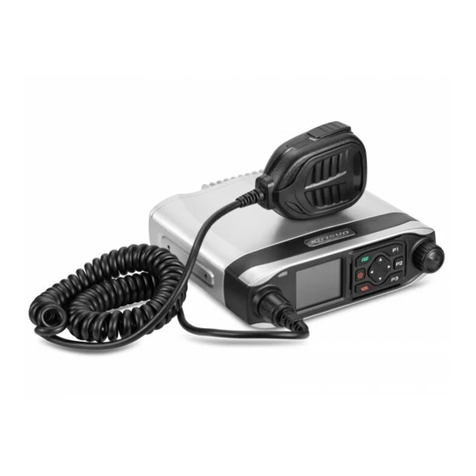
5
• Avoid installing the unit where it will be subjected to
high temperatures from direct sunlight, hot air, or from a
heater, or subject to excessive dust, dirt or vibration.
DIN Front Mount
1. Slide the mounting sleeve o of the chassis if it has not
already been removed. If it is locked into position, use
the removal
keys (supplied)
to disengage it.
The removal keys
are depicted in
“Removing the
Unit” on page 6 .
2. Check the
dashboard
opening size
by sliding the
mounting sleeve into it. If the opening is not large
enough, carefully cut or les as necessary until the sleeve
easily slides into the opening. Do not force the sleeve into
the opening or cause it to bend or bow. Check that there
will be sucient space behind the dashboard for the radio
chassis.
3. Locate the series of bend tabs along the top, bottom and
sides of the mounting sleeve. With the sleeve fully inserted
into the dashboard opening, bend as many of the tabs
outward as necessary to rmly secure the sleeve to the
dashboard.
4. Place the radio in front of the dashboard opening so the
wiring can be brought through the mounting sleeve.
5. Follow the wiring diagram carefully and make certain
all connections are secure and insulated with crimp
connectors or electrical tape to ensure proper operation.
6. After completing the wiring connections, turn the unit
on to conrm operation (vehicle accessory switch must
be on). If the unit does not operate, recheck all wiring
until the problem is corrected. Once proper operation is
achieved, turn the accessory switch o and proceed with
nal mounting of the chassis.
7. Carefully slide the radio into the mounting sleeve making
sure it is right-side-up until it is fully seated and the spring
clips lock it into place.
8. Attach one end of the perforated support strap (supplied)
to the screw stud on the rear of the chassis using the hex
nut provided. Fasten the other end of the dashboard
either above or below the radio using the screw and plain
washer provided. Bend the strap, as necessary, to position
it. Some vehicle installations provide cavity for rear
support. In these applications, place the rubber bushing
over the screw stud and insert.
CAUTION: The perforated rear support strap or rear rubber
mounting bushing must be used in the installation of the
radio. Installation without either may result in damage to the
radio or the mounting surface and void the manufacturer’s
warranty.
9. Test radio operation by referring to the operating
instructions for the unit.
